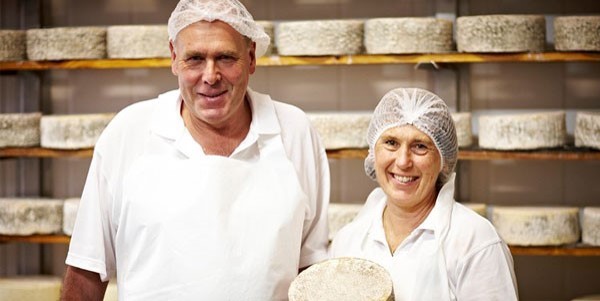Discover the Art of Floridia Cheese: An Overview to Cheese Makers Melbourne
Wiki Article
Opening the Tricks of Artisanal Cheese Making: A Detailed DIY Overview
In the world of culinary workmanship, artisanal cheese making stands as a testimony to the fragile equilibrium in between custom and advancement. As we embark on this journey to debunk the art of producing beautiful cheeses, we are faced with a tapestry of abilities and keys waiting to be untangled.Selecting the Right Milk
When beginning on the journey of artisanal cheese production, the selection of milk plays a crucial duty in identifying the top quality and attributes of the final item. The type of milk selected affects the flavor, appearance, and on the whole profile of the cheese.When choosing milk for cheese making, it is necessary to consider the fat web content. Greater fat web content in milk can result in a creamier and richer cheese, while lower fat content might bring about a drier and firmer appearance. In addition, the resource of the milk, whether from cows, goats, lamb, or buffalo, adds distinct tastes and qualities to celebrity (Cheese Makers Melbourne). Each kind of milk brings its own nuances, permitting a variety of cheese ranges to be crafted based on the selected milk. Inevitably, the choice of milk is an essential decision that establishes the structure for an effective artisanal cheese-making undertaking.
Culturing and Coagulating
To start the cheese-making process, the important steps of culturing and coagulating must be carefully implemented to transform milk right into curds and whey. The kind of culture made use of can substantially affect the flavor, appearance, and ripening of the last cheese item.

The timing and temperature level control during culturing and coagulation are critical aspects that influence the last result of the cheese. Appropriate execution of these actions is important to ensure the preferred texture, taste, and consistency of the artisanal cheese being generated.
Draining and Pushing Curds
After the milk healthy proteins have coagulated and the curds have been cut to launch whey, the following important action in artisanal cheese making entails draining and pressing the curds to accomplish the wanted texture and consistency of the last cheese product. The time for draining pipes can vary depending on the type of cheese being made and the preferred wetness web content.Pressing helps expel any remaining whey and compacts the curds to form a strong cheese wheel. Correct draining pipes and pressing are essential actions that dramatically influence the high quality and characteristics of the artisanal cheese being produced.
Aging and Flavor Strategies
Carrying out careful aging and flavoring techniques is pivotal in enhancing the depth and intricacy of artisanal cheeses, boosting their taste profiles to exquisite degrees of improvement and elegance. Aging plays an important function in creating the special flavors and appearances that distinguish artisanal cheeses. Throughout the aging process, cheeses are kept in very carefully managed atmospheres where variables such as moisture, air flow, and temperature are adjusted to motivate the growth of valuable molds and microorganisms. This controlled setting allows celebrity to develop gradually, establishing intricate aromas and rich tastes.Flavoring techniques likewise add significantly to the final taste of artisanal cheeses. Cheesemakers might pick to present additional flavors by integrating components such as natural herbs, seasonings, and even fruits into the cheese during the manufacturing procedure. In addition, some cheeses are cleaned or rubbed with different liquids, such as brine or alcohol, to boost their textures and flavors.
Wrapping and Storing Cheeses

Conclusion
To conclude, mastering the art of artisanal cheese making includes carefully choosing the best milk, adhering to accurate culturing and coagulating procedures, draining pipes and pressing curds successfully, and utilizing different aging and flavor strategies. By following go to these guys these actions faithfully and with attention to detail, you can produce your very own delicious and distinct cheeses in the house. Bear in mind to wrap and keep your cheeses appropriately to ensure ideal taste and texture development. Pleased cheese Melbourne Made Cheese making!Each type of milk brings its own subtleties, permitting for a wide range of cheese varieties to be crafted based on the chosen milk.After the milk proteins have coagulated and the curds have actually been cut to release whey, the next important step in artisanal cheese making includes draining and pressing the curds to attain the preferred structure and consistency of the final cheese product. Most cheeses should be covered in wax paper or cheese paper to permit them to take a breath while securing them from drying out. For cheeses that need to continue aging, such as bloomy skins or washed rinds, ensure they are saved in a trendy setting like a cheese cave or a refrigerator established to the ideal temperature level. By paying interest to the covering and storage of artisanal cheeses, cheese manufacturers and enthusiasts can protect the stability of these delicacies and fully appreciate their complicated tastes.
Report this wiki page